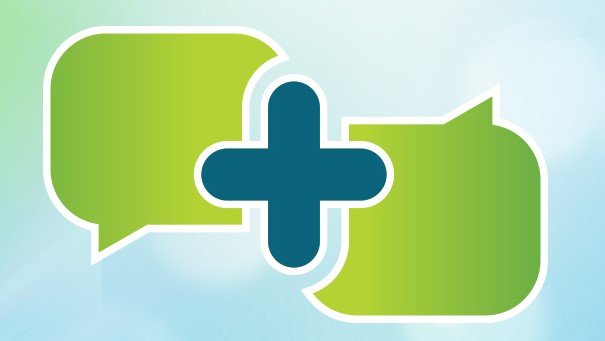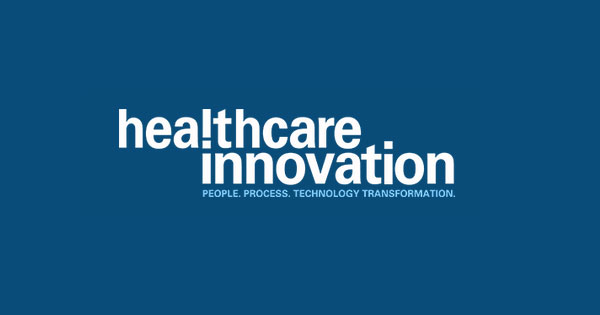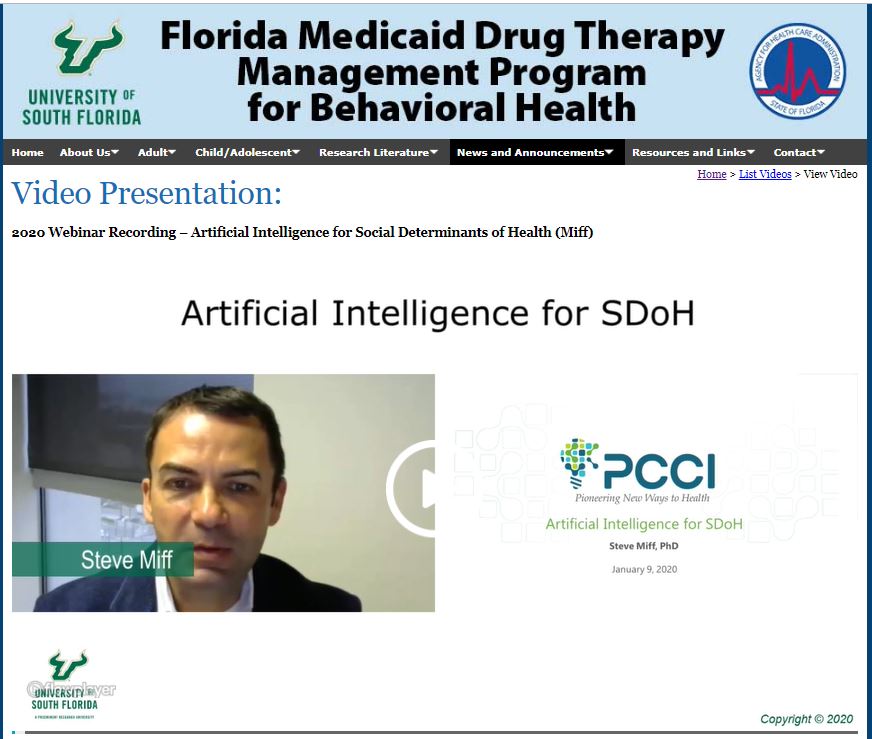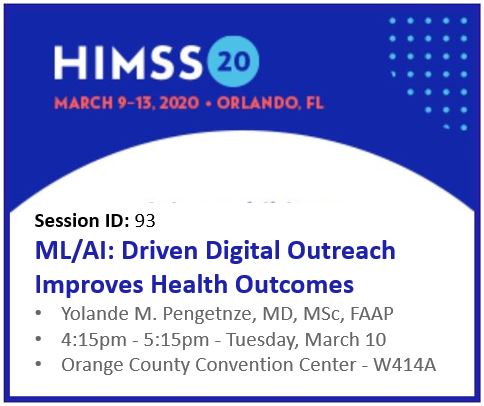The Future of NMDOH: The Power of Personal Determinants of Health
It is encouraging to see many healthcare systems and payers focusing on the impact of Non Medical Drivers of Health (NMDOH) and looking for ways to partner with community-based organizations to address and improve these issues locally. Although this is a necessary step, I believe that providing access or referrals to community organizations is not the full answer. While healthcare systems can provide referrals and connect patients to resources such as food banks or employment resources, it may not be enough to create individual engagement and empowerment to use those resources. We more fully need to appreciate the role played by the environment in which we grow up and the choices available to us in shaping how we respond to NMDOH factors as individuals.
1SDOH2″ alt=”” width=”430″ height=”455″ />
As part of an innovation center where we align data science with NMDOH to help systematically disadvantaged individuals, I’ve been witness to projects and research that point to the theory of individual resiliency as part of the equation. The American Psychological Association defines individual-level resilience as the process of adapting well in the face of adversity, trauma, tragedy or threats.[1] A review of the research on
resilience by the WHO found that an individual’s ability to successfully cope in the face of significant adversity develops and changes over time, and that interventions to strengthen resilience are more effective when supported by environments that promote and protect population health and well-being. Further, supportive environments are essential for people to increase control over the determinants of their health.[2]
Also, in addition to traditional resilience methods, the emergence of methods to assess an individual’s capacity for self-care are adding significant insights into personal determinants of health. In particular, the needs of the growing population of complex patients with multiple chronic conditions calls for a different approach to care. Clinical teams need to acknowledge, respect and support the work that patients do and the capacity they mobilize to enact this work, and to adapt and self-manage. Further, clinical teams need to ensure that social and community workers and public health policy advocates are part of the proposed solution. Researchers at the Mayo Knowledge and Evaluation Research (KER) Unit and the Minimally Disruptive Medicine (MDM) program led by Dr. Kasey Boehmer are developing qualitative methods and measures of capacity and individual’s ability for self-care.
Take post-traumatic stress disorder (PTSD), as an example. It has been estimated that around 50-60 percent of people in the US will experience severe trauma at some time in their lives. Around one in 10 goes on to develop PTSD, which is permanent in a third of cases. But some people who have lived through major traumatic events display an astonishing capacity to recover.[3] A complex set of factors can be attributed increasing an individual’s resiliency to trauma including their personality, their individual biology, childhood experiences and parental responses, their economic and social environment as shaped by public policy, and support from family and friends.
I could apply this to patient engagement as well. In any given population we may be able to determine which factors cause one individual to not only take a referral to a food bank but continue to receive services to improve their food insecurity versus another individual from the same neighborhood and population who did not. Perhaps the first individual connected with a case manager at the food bank who did regular check ins. Maybe they had family or friends who drove them to the food bank weekly or attended nutrition classes at the center that provided them with regular group support.
What might Non Medical Drivers of Health look like in 2025 if we could capture, analyze and use these “resiliency” factors or personal determinants of health? In 2025, NMDOH will evolve to:
-
- NMDOH will evolve and morph intoPDoH – Personal Determinants of Health
- Policy makers at local, state and federal levels will recognize the role that these factors play toward health and well-being of people and will enact policies to provide support for prevention versus late stage clinical intervention
- PDoH will be broadly integrated into Cognitive Health Records and built into AI-based risk predictive models
- Bridging isolation (mental and physical) will be a key focus: Transportation-driven access challenges will be addressed through co-location of services and broadly through digital technology, tele-consults (at non-traditional location such as food pantries) and drone deliveries (everyone loves drones)
- PDoH will evolve to integrate pharmacogenetic/genetic based data and measures of self-care capacity
- From my perspective, we will be better at understanding “who are our patients” beyond clinical diagnoses through both AI driven deep neural network analyses of PDoH data and qualitative studies leveraging discrete choice methodologies and other consumer choice and segmentation research methods
SPOTLIGHT ON PATIENT CARE:
In a collaboration between Parkland Health & Hospital System and North Texas food pantries, the partners wanted to test their ability through connected data share and cross-organizational care coordination using a social-to-health Dallas Information Exchange Portal (IEP) to impact the health care experience of food-insecure individuals with diabetes and/or hypertension.
Individuals who were enrolled in the program had a significantly higher outpatient appointment attendance and a near significant decrease in no-show/same day cancellation of appointments versus a control group. In addition, satisfaction surveys showed that 93% of respondents either agree or strongly agree that the program has made them more likely to go to their doctor’s visit. These results seem to strengthen the idea that those individuals with adequate social supports, and connectedness between the health system and community providers increases individual engagement in health and well-being.

About Vikas Chowdhry
Vikas Chowdhry, MS, MBA, is PCCI’s Chief Analytics and Information Officer with more than 15 years of healthcare experience. He works closely with data science and clinical teams at PCCI to develop machine learning driven technologies and products that can empower clinical and social services providers and individuals to create communities that are healthier and more productive. Vikas would like to thank the teams at Parkland and PCCI who helped him understand the nuances and impact ofNMDOH on the people served by Parkland. Vikas would also like to thank NatashaGoburdhun from NDGB Advisors who contributed to this post.
[1]https://www.apa.org/helpcenter/road-resilience; accessed on July 19, 2019
[2] Strengthening resilience: a priority shared by Health 2020 and the Sustainable Development Goals; World Health Organization, Regional Office for Europe; http://www.euro.who.int/__data/assets/pdf_file/0005/351284/resilience-report-20171004-h1635.pdf, accessed July 18, 2019
[3]https://www.theguardian.com/science/blog/2014/dec/19/unbroken-resilience-louis-zamperini-post-traumatic-stress-disorder; accessed on July 18, 2019
HIMSS20: A can’t miss NMDOH talk with PCCI’s Steve Miff & Neil Patel, President of Healthbox
HIMSS20
On Monday, March 9 at 11:55 a.m. in the Rosen Centre Junior Ballroom G, Healthbox President Neil Patel sits down with Steve Miff, president and CEO of Parkland Center for Clinical Innovation to discuss the launch of the center’s Building Connected Communities of Care: A Playbook at HIMSS20 this year.
The CCC Playbook is based on the experience of Dallas, Texas, one of the first metropolitan regions to develop a comprehensive foundation for partnerships between a community’s clinical and social sectors using web-based information exchange.
Click on the image below to get all the details:
PCCI Expert: What to expect at HIMSS20
In this week’s edition of Healthcare Innovation, Leslie Wainwright was interviewed for her expert perspective on what to look for at the upcoming HIMSS20 event in March. She also discusses the new Playbook set to be released at HIMSS20. Click on the image below to read the whole story.
Steve Miff Webcast on Artificial Intelligence for Non Medical Drivers of Health
Recently, PCCI’s CEO & President, Steve Miff participated on a webcast hosted by the University of South Florida for the Florida Medicaid Drug Therapy Management Program for Behavioral Health. His presentation “Artificial Intelligence for NMDOH” discussed how Non Medical Drivers of Health and AI can work together to help improve care for under-served populations. Click on the image below to see the video webcast:
PCCI at HIMSS20: Yolande M. Pengetnze, MD
At HIMSS20 in Orlando on March 10, PCCI’s Senior Medical Director, Yolande M. Pengetnze, MD, will present on how machine-learning and artificial intelligence-driven algorithms guide targeted and tailored educational for high-risk Medicaid children with asthma and Medicaid pregnant women at risk for preterm delivery. Click on the image below for all the details.
Get Your COPY OF THE BOOK THAT WILL HELP BUILD SUSTAINABLE CONNECTED COMMUNITIES OF CARE
Available now is a new book from PCCI: “Building Connected Communities of Care: The Playbook For Streamlining Effective Coordination Between Medical And Community-Based Organizations.” This is practical how-to guide for clinical, community, and government leaders interested in building connected clinical-community services.
The book shows how to facilitate cross-sector care coordination; enable community care partners to better provide targeted services; reduce duplication of services across partnering organizations and help to bridge service gaps in the currently fragmented system.
Published by HIMSS, the book will be available on March 9. Reserve your copy today at: HIMSS publishing: https://lnkd.in/eiB2Jq7 Or Amazon.com: https://lnkd.in/eBKH9h7
PCCI Poster Presentation: Preterm birth & asthma poster from IHI Scientific Symposium
PCCI’s text messaging program on asthma and preterm birth prevention was featured as a poster presentation at December’s Institute for Healthcare Improvement (IHI) Scientific Symposium. The poster program titled “A Novel Evidence-Based Approach to Digital Outreach Improves Patient Engagement and Health Outcomes in Two Distinct Cohorts of Medicaid Patients,” was presented by by PCCI’s Senior Medical Director, Yolande Pengetnze, MD. Dr. Pengetnze was joined at IHI by Dr. Barry Lachman, from the Parkland Community Health Plan (PCHP) where they shared the poster that demonstrated how PCCI and PCHP support at-risk populations by helping to reduce the harm caused by asthma and preterm births.
Click on the image below to view the entire poster:
In The News: Patient Engagement HIT talks with PCCI about NMDOH
NMDOH: Better management of high utilizers and the impact on the overall costs of care
By Natasha Goburdhun, MS, MPH, PCCI’s Vice President, Connected Communities of Care
For safety-net healthcare systems, helping patients with social needs such as transportation, food or housing, just makes sense from a mission perspective. But when it comes to creating a business case, it gets more complicated.
A Kaufman Hall survey of CFOs cited cost reduction, managing changing payment models and improving performance management as the top three challenges for health systems. So, while research may show impacts on costs and utilization from interventions that address Non Medical Drivers of Health (NMDOH), some organizations may not be willing to take the risk of investing in strategies that are outside their scope of service and may not show immediate financial returns. But I would argue that the impact of Non Medical Drivers of Health are everywhere in current health system operations and costs.
“High-utilizers”, individuals who suffer from a multitude of chronic diseases and often complex social/economic challenges, require intensive primary care, and frequently have issues with access, often gain the attention of financial and operational leadership, particularly if the organization has value-based contracts or large uninsured populations. In my experience, to truly manage this population requires addressing the upstream issues that are preventing them from leading and maintaining a healthy life.
But with limited resources and time, health systems need to develop a clear strategy by understanding exactly which individuals to treat, and what intervention will best address their healthcare and social needs.
From my experience working with the full channel of care, I believe the critical success factor in developing this strategy is leveraging data science and technology to conduct a comprehensive data analysis of the target population.
-
- Analyze claims, clinical, social and economic data from your community at the individual and block level, to determine what social determinants are most impacting your high-utilizer population, such as lack of transportation, food insecurity etc. Finding key contributing factors and root-cause issues for your target population is critical.
- Test interventions that other health systems have found lead to improved cost savings and health outcomes. Start with issues with available solutions like transportation, referrals to food banks, and housing services.
- Engage external partners to help you execute the intervention, particularly social services and community-based organizations (CBO) that have expertise in addressing social needs, through a collaboration with a comprehensive governance model.
- Measure outcomes and adjust strategies as needed.
Scale your initial interventions to other populations, and/or move to more complex social needs.
SPOTLIGHT ON PATIENT CARE:
While some health systems may not be ready to dive into a NMDOH strategy, but many realize that the cost of social determinants could already be impacting their daily operations:
1. High No-Show Rates in Clinics
Average no show rates in primary care clinics are 19% with specialty clinics rates running higher, with an average cost between $125 to $350 [1]. That can add up over the course of a year to significant revenue loss for health systems. Lack of transportation or access to affordable daycare play a big role in no show rates among other NMDOH. An estimated 3.6 million people missed medical treatment due to transportation issues [2].
While many health systems and health plans have implemented programs with rideshare companies to solve this problem with some success [3]. Targeting the precise patient population that will benefit from rideshare services is critical. In addition to integrating and aligning transportation services for high-need patients, health systems should also explore other emerging technology and non-traditional option to bring services to where residents already are, instead of attempting to find ways to bring them to traditional healthcare access sites. For example, use of telemedicine and digital health as well as deployment of health services in non-traditional settings such as food pantries and or other CBO settings.
2. Unnecessary Emergency Department Utilization for Vulnerable Populations
Dallas has the fifth highest city jail population, and emerging research suggests that underlying social, behavioral and health issues, particularly substance use disorders and mental illness, contribute to incarceration and recidivism, and that treatment, combined with seamless care continuity for individuals when they return to communities, can help prevent both [4]. Parkland Health and hospital system is designated care provider for this vulnerable population in Dallas. While inmates receive healthcare through Parkland Jail Health program, upon release many former inmates end up without support and in the Parkland emergency department (ED) to seek treatment, driving up unnecessary utilization and costs.
To prevent unnecessary ED visits or a return to jail, Parkland and PCCI are developing an intelligent discharge tool and predictive risk score, combining clinical, social (housing, transportation, job training access) and behavioral factors for inmates, to help connect those being released to community resources. We are also digitally the jail health, clinical providers and community providers on one secure technology platform to better generate real-time cross-sector referrals, track utilization and follow-up, and document services. As a result, transition plans for inmates will comprehensively incorporate medical, employment and financial support like resources.
3. Manage Transitions of Care
Hospitals across the country often struggle with providing homeless patients transitional care to post-acute care facility. If an appropriate place cannot be found, many of these patients stay in the hospital longer than necessary, increasing unnecessary inpatient utilization. And there are no signs of this issue abating anytime soon. In California, hospitals discharged homeless patients nearly 100,000 times in 2017, a 28% increase over 2015.
Two different programs in California have sought to mitigate these issues for hospitals and to assist patients with their social needs. In Los Angeles, the National Health Foundation opened a 62-bed facility for discharged hospital patients who needed less intensive medical oversight than a nursing home. At the facilities, patients have access to case managers for assistance with transportation, food and permanent housing. Area hospitals will often reserve beds at the facility for homeless patients, and L.A. Care Health Plan also leases beds there for their members.
In San Jose, Santa Clara Valley Medical Center created a one-year partnership with Skyline Health Center, a local nursing home. Skyline allocates fifteen beds to the hospital for homeless patients or patients who have no one to care for them at home. During the first ten months, 55 patients were sent to Skyline, and 42 were discharged, the majority to long-term housing programs or family members and friends. Of those discharged, only six were readmitted, a low number for this population [5].
 About Natasha Goburdhun
About Natasha Goburdhun
As Vice President, Connected Communities of Care, Goburdhun uses PCCI’s advanced analytics to provide detailed insights on community health and social needs and assists community organizations, payers and providers in developing strategies and impact/equity measures that address the needs of vulnerable populations. She has over 20 years of strategic planning and operations experience in health plan, provider and community-based organization sectors.
[1] https://www.solutionreach.com/blog/which-wins-the-national-average-no-show-rate-or-yours
[2] https://patientengagementhit.com/news/overcoming-transportation-barriers-to-drive-patient-care-access
[3] https://patientengagementhit.com/news/do-rideshare-tools-reduce-transport-barriers-patient-no-shows
[4] Healthcare Plays Vital Role in Reducing Recidivism; EthicsDaily.com; November 2, 2017; https://ethicsdaily.com/report-healthcare-plays-vital-role-in-reducing-recidivism-cms-24443/; accessed July 14, 2019.
[5] https://khn.org/news/finding-homeless-patients-a-place-to-heal/
###

















